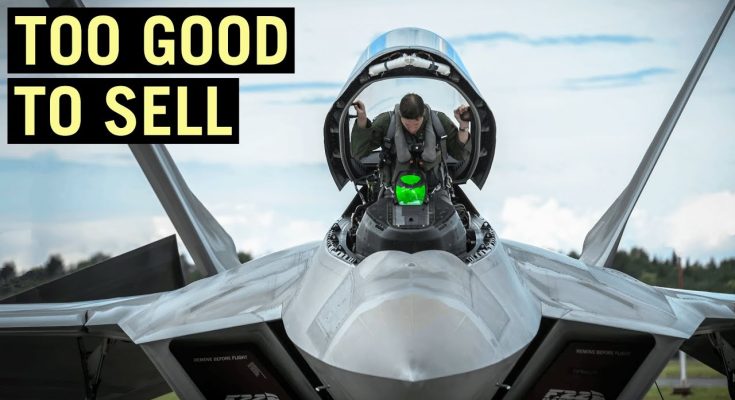The F-117 Nighthawk, often referred to as the “Stealth Fighter,” holds a unique place in aviation history. Developed in the 1980s by Lockheed’s Skunk Works division, it became the first operational aircraft designed around stealth technology, making it nearly invisible to radar. While many advanced fighter jets have become staples of allied air forces across the globe, the F-117 Nighthawk remains one of the few American military aircraft that was never exported. This decision to keep the aircraft exclusively in the U.S. military’s hands is rooted in its revolutionary technology, military strategy, and the secrecy that surrounded its development.
A Revolutionary Design
The F-117’s design was radically different from any other aircraft in its time. It had a faceted, angular shape—a stark contrast to the smooth, curved surfaces typically seen on traditional fighter jets. This design was not chosen for its aesthetic appeal but for its radar-absorbing capabilities. By using flat, sharp surfaces, the F-117 was able to deflect radar waves in such a way that it drastically reduced its radar cross-section (RCS), making it nearly undetectable to enemy radar systems.
Its stealth features were complemented by advanced avionics and an early form of infrared targeting. While not as sophisticated as modern stealth fighters like the F-22 or F-35, the F-117 still provided a significant leap in technological capability, especially in terms of its ability to conduct precision strikes deep behind enemy lines, undetected.
Why the F-117 Was Never Exported
The primary reason the F-117 was never sold to foreign governments is the aircraft’s stealth technology. At the time of its development, stealth was still a highly classified and evolving technology, and it was considered a strategic advantage for the U.S. military. Allowing any foreign nation to possess the F-117 would have potentially exposed sensitive design details that could compromise U.S. air superiority. The aircraft’s stealth capabilities were cutting-edge, and the U.S. government was not willing to share that technological edge with any ally, regardless of the relationship.
Further complicating the issue was the fact that the F-117 was not a traditional fighter aircraft. Unlike multi-role aircraft like the F-16 or F/A-18, the F-117’s design was optimized solely for precision strike missions in highly defended airspace. Its limited air-to-air capabilities, combined with its specialized nature, made it less desirable for countries looking for a more versatile, general-purpose fighter jet. For these reasons, the F-117 never became a “hot export commodity” like other American-made aircraft, despite the initial interest from various nations.
The F-117’s Role in Combat
The F-117’s operational history, despite its lack of exports, speaks to its effectiveness in combat. The aircraft was first deployed in combat during the 1991 Gulf War, where it played a crucial role in precision bombing against strategic targets like command centers and infrastructure. Its ability to deliver payloads undetected made it a game-changer during the conflict. The stealth technology enabled it to operate at night and strike with precision, reducing collateral damage and avoiding enemy air defenses.
Throughout the years, the F-117 continued to serve in high-profile conflicts, including the Kosovo War, Operation Iraqi Freedom, and the War on Terror in Afghanistan. However, as the aircraft aged, the F-117 was eventually retired in 2008, with the rise of more advanced stealth aircraft like the F-22 Raptor and F-35 Lightning II, which offered greater capabilities.
Legacy and Final Years
Although the F-117 is no longer in active service, its legacy is still felt today. It was a pioneering platform that proved the viability of stealth in modern warfare. Its design and technology laid the groundwork for future aircraft, including the F-22 and F-35. Interestingly, even after its retirement, the F-117 was never fully declassified. The U.S. government kept the details of its capabilities under wraps, and even its final decommissioning was done quietly to prevent foreign adversaries from gleaning too much information.
Today, the F-117 Nighthawk remains a symbol of innovation and secrecy, representing a pivotal moment in the development of stealth technology. It is a reminder of the careful, calculated approach the U.S. military takes in safeguarding its technological edge, even at the cost of keeping such an incredible aircraft exclusively in its own hands. Though it never became an export success, the F-117’s influence on air combat and stealth development will be remembered for decades to come



